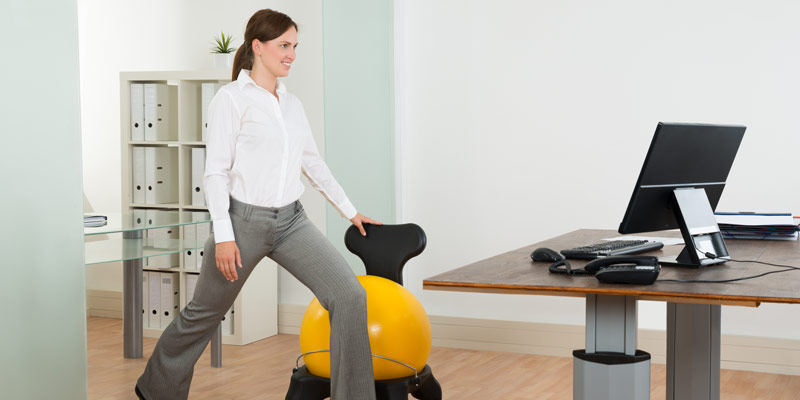Renowned for being the healthier alternative to traditional sedentary desks we take a look at the rise of the sit stand desk, some of the benefits of standing while working, and also share some tips on how to best use your sit stand desk.
Sitting is the new smoking – blamed for increasing the risk of heart disease and cancer, as well as diabetes and obesity. Health guidelines suggest we should spend 150 minutes a week in moderate exercise, but many of us sit down for more than half the working day and email means we don’t even have to get up to talk to anyone.
It is not surprising then that sit stand desks are rising in popularity and demand has risen tenfold over the past 2-3 years. The styles vary from stationary surface areas that look like raised tables to floating standing desks that can quickly transition from sitting to standing. Many of our clients now brief us that they would like sit stand desks for many, and in some cases all if their employees. Other clients are increasingly asking about the benefits of a sit stand desk and why they should invest in them?
Benefits of standing desks
Many companies have embraced workplace wellbeing and are actively encouraging and promoting increased movement and less sedentary work practices.Increased movement – Health experts recommend that we spend at least 2 hours a day standing or away from our desk gradually increasing to 4 hours a day and using a sit stand desk can help employees to achieve this. Greater movement and activity levels have also been cited as factors that can help to decrease blood pressure, stress and other chronic diseases.
Improved posture and reduced back pain – It’s an undeniable fact that people who spend more time sitting are at a greater risk of suffering back pain and that’s still the case even with today’s ergonomic office seating and workplace assessments.
Sit stand desks can help to decrease back pain and improve posture but it’s important to make sure they are set up in the right way, ensuring that your screen sits just above eye level to avoid bending or slouching while you read or type.
Reduce obesity risk – Leading standing desk researcher, James Levine of the Mayo Clinic conducted a study of a group of office workers who all added 1,000 calories to their daily intake without changing their exercise or movement habits. To understand why some of the workers gained weight while others didn’t, Levine and his team sowed sensors into the undergarments of the workers to track daily movement.
What they found was that the group not gaining weight actually sat 2.25 hours less than their peers. To really experience optimal health, sedentary workers must actually walk around but a standing desk is a great start and standing burns 50 more calories per hour than sitting.
Create a dynamic, agile workplace – The wholescale adoption of sit stand desks can help to create a vibrant, dynamic and agile workplace. Increased movement and stand up working can alter the workplace dynamic creating a buzz and a more collaborative environment.
People are often perceived as more approachable when not seated encouraging more interaction and engagement throughout the workplace.
Tips for using a sit stand desk
Standing desks have many benefits but there are some things to keep in mind as you make the transition.Start slow – Don’t try to go from six hours of sitting to zero overnight. So start with just 20 minutes at a time at your standing desk, then add on time as you get used to the setup. Standing doesn’t sound like a lot of work, but when your body is used to sitting most of the day, you will strain your body by standing too much, too fast.
Use a mat – Take it easy on your knees, hips, and ankles by using a gel mat where you plan to stand. Take it a step further and wear non-slip, supportive shoes, too.
Get your work done – If standing is too distracting, use your sitting times when you need that extra concentration. You may find the standing desk a little distracting at first, but you’ll likely adjust and learn to refocus with time.
Set it up right – Your computer screen should sit 15 to 30 inches from your eyes, with your eye level even with (or slightly below) your screen. Keep your wrists flat and your elbows at a 90-degree angle. If you feel like any part of your body is straining while you are standing then you need to make adjustments to make it more comfortable.
Move, too – Standing does burn more calories than sitting, but to really see optimal health benefits make sure you are walking throughout the workday, too.
